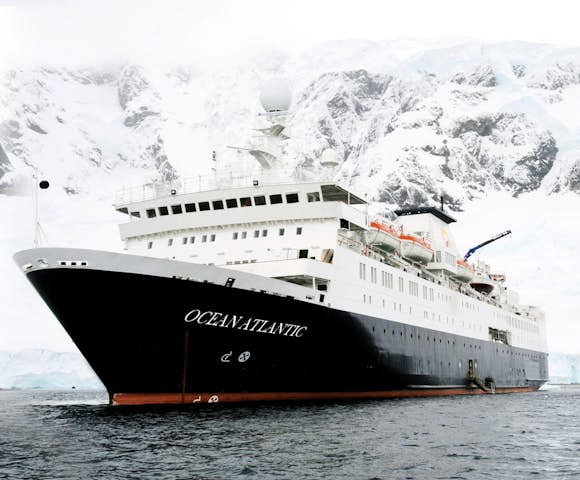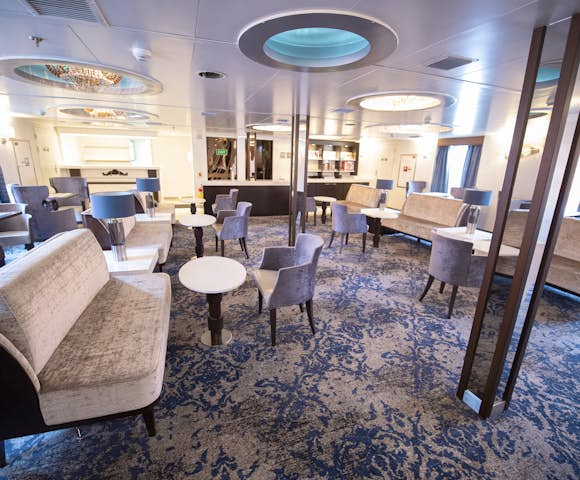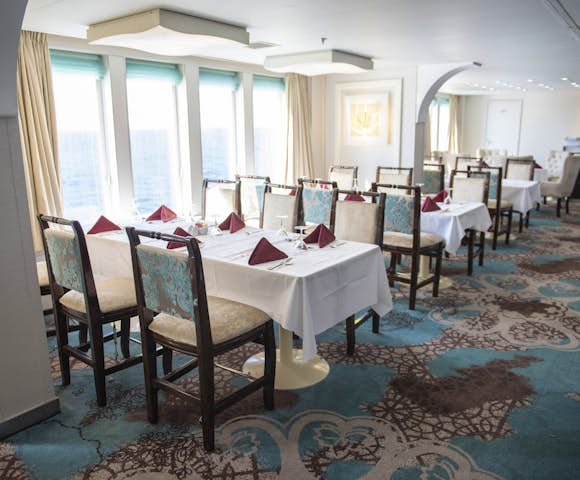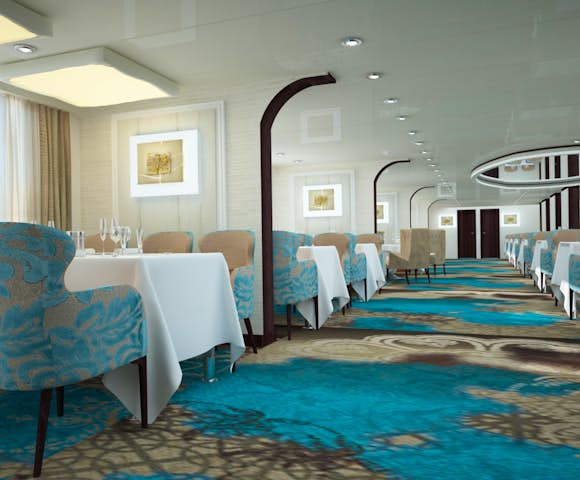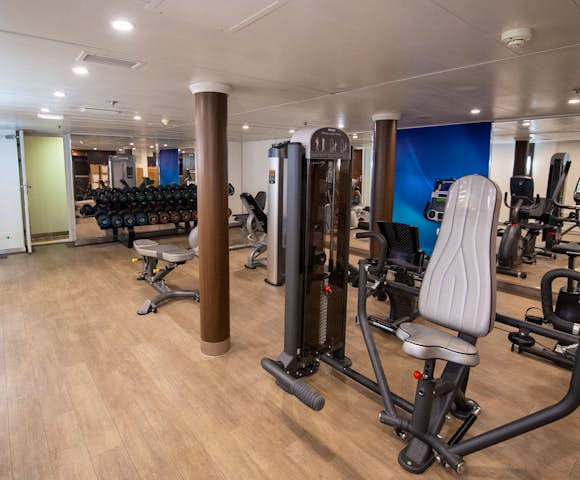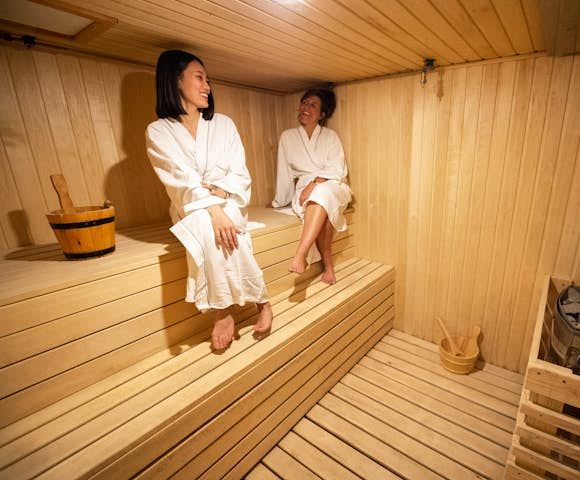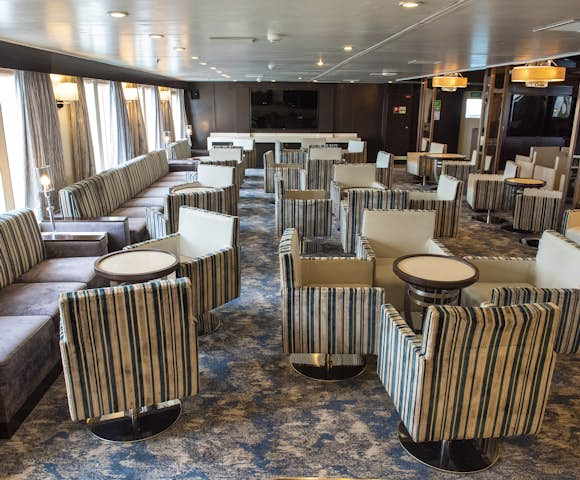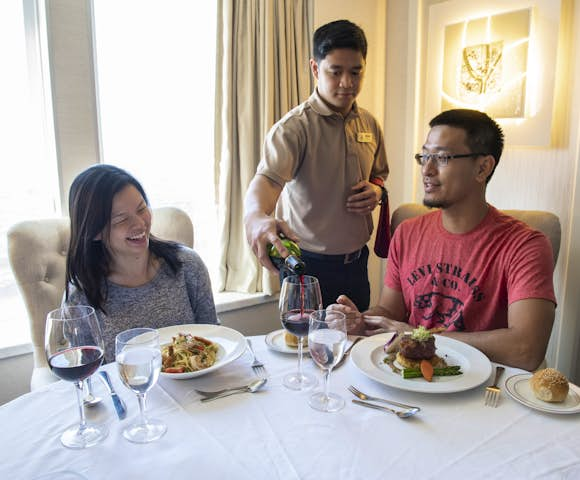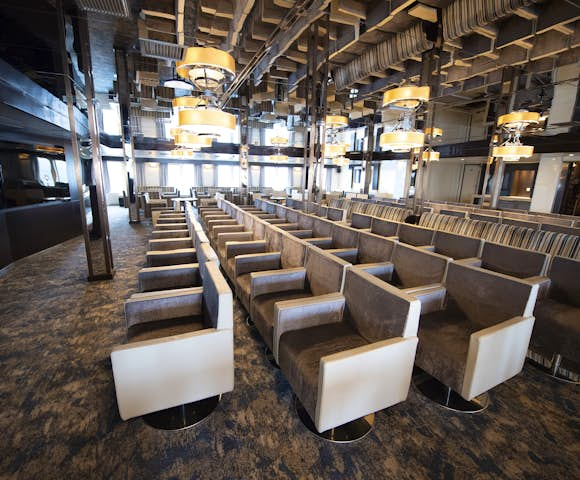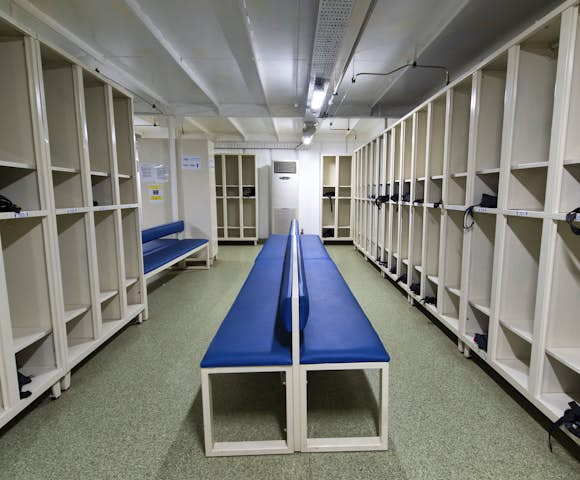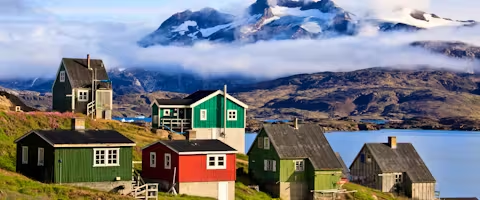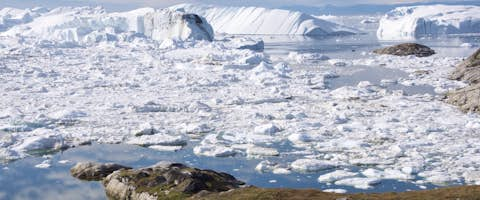West Greenland & Disko Bay - 8 Days - $3,290
Trip Summary and Itinerary Map
- 4 full days exploring the west coast of Greenland
- Includes return flights from Iceland or Denmark to Kangerlussuaq
- A compact trip for those short on time
- Travel on a recently refurbished ship
- Optional helicopter flight over the ice cap available
- Snowshoeing available when conditions allow
Start from Kangerlussuaq and end at Kangerlussuaq
Landmarks potentially visited on West Greenland & Disko Bay
Operator's Itinerary
Day 1 – Arrival in Kangerlussuaq, Greenland:
Guests not participating in any excursions can tenjoy the sight in town before embarkation in the late afternoon when we will transfer to the harbour and board the ship by Zodiacs. They will ferry passengers out to the ship anchored about one kilometre out into the fjord. After checking in, there will be a short safety demonstration before dinner in the lovely dining room. We will set sail after dinner and begin our passage through the 160km long fjord and out into the ocean.
NB. Your luggage will be transferred to the ship directly from the airport; please pack any items you might need during the first day in your carry-on baggage. We suggest that you pack a waterproof jacket to wear as we are ferried to the ship on our Zodiacs, which are open to the elements.
Day 2 – Sisimiut:
After breakfast, we arrive in the colourful town of Sisimiut, where we will get an idea of what modern Greenland looks like. With 5400 inhabitants, it is considered Greenland’s second city. People have lived around Sisimiut on and off since 2500 BC.
In 1756, Count Johan Ludvig Holstein, established a colony here and called it Holsteinsborg. The oldest part of Sisimiut’s historic quarter features town houses from this Holsteinsborg era, and the oldest house in town dates back to 1756. One of the most culturally significant buildings is the Blue Church, built in 1775. Nowadays, Sisimiut is an important place for education and industry; local factories process the bulk of Royal Greenland's fishing. The fish processing plant is one of the largest of its kind in Greenland, and one of the most modern in the world.
Our city tour highlights include the historic colonial quarter, as well as the museum and the beautiful church. Additionally, we will pay a visit to the busy city centre for a glimpse of what daily life is like in 21st century Greenland. In the afternoon, our voyage will continue northward. As evening falls, we will pass the Sisimiut Isortuat Fjord, the Nordre Strømfjord settlements of Attu and Ikerasaarsuk, and the small town of Kangaatsiaq. During the course of the bright night, we will pass Aasiaat and proceed into the southern waters of Disko Bay. The ship’s heading will be set for Disko Island, known for its distinctive 1000m/3280ft layered crags.
At this point, we will be north of the Arctic Circle, where the nights are bright and early risers can enjoy the sight of the icebergs on Disko Bay as they squeeze out of the Ilulissat Icefjord and dance into the frigid ocean waters.
Day 3 – Qeqertarsuaq on Disko Island:
Below Disko Island’s 1000m tall mountains we pull into port in a protected natural harbour, aptly named Godhavn meaning “Good Harbour” in Danish. Its Greenlandic name “Qeqertarsuaq” simply means “The Big Island”.
Up to 1950, Godhavn was the most important town north of Nuuk, the main town of Greenland. This was solely because of the many whales that the whaling boats towed here from Disko Bay. From the 16th century onwards, this bestowed the town with much wealth. The present day residens, however, find it very difficult to secure work because of the infrequent connections to the mainland. We walk through town to the characteristic, octagonal church, nicknamed “the inkpot of God”. During our stay in Qeqertarsuaq we might visit the local community to share some of their customs.
Day 4 – Uummannaq:
This morning you’ll find yourself in one of Greenland’s most beautiful and sunny regions. The dry and settled arctic climate has around 2,000 hours of sunshine and 100 millimetres of precipitation per year, giving the region the right to call itself the Greenlandic Riviera.
The ship is set to reach Uummannaq situated on a small island. This impressive 1,175m heart-shaped mountain gives the town its name: Uummannaq means ‘place where the heart is’. There should be enough time to explore before heading back to the ship for lunch. Uummannaq was founded as a colony in 1758 on the Nuussuaq mainland. Shortly after, in 1763, it was moved to the nearby island as seal hunting was more bountiful there. On our walk along the town’s steep streets, we visit the historic train-oil building built in 1860 as a storage place for whale and seal blubber. Because of its horrid stench, the blubber was not boiled here, but in a location far outside of town.
Day 5 – Eqip Sermia Glacier:
By the morning the ship should have reached a magnificent natural highlight - the calving Eqip Sermia glacier. We plan to enjoy lunch on the sun deck with this magnificent natural wonder in the background. Situated approximately 50 nautical miles north of Ilulissat, the Eqip Sermia Glacier is renowned for its jaw-dropping beauty. Arctic explorers selected this location as a base for their studies. The acclaimed Swiss glaciologist, Alfred de Quervain used the location as a base for his expeditions onto Greenland’s inland ice sheet over a century ago. We will sail as close as possible to the ice’s edge but at a safe enough distance to avoid plunging blocks of ice and violent waves that often result from the calving glacier.
In the afternoon we will head for Ilulissat, where we berth in the evening and go for a night walk to the Sermermiut plain. If the sea ice is too dense between the Ataa fjord and the Eqi glacier, the captain will have to select a different route; in this case, the itinerary will be adjusted accordingly and we might, for example, pay a visit to the abandoned coal mine at Qullissat or visit the settlement of Saqqaq.
Day 6 – Ilulissat:
On to Ilulissat, which is possibly the most well located town in Greenland. Its name simply means ‘icebergs’ in Greenlandic, and the town’s nickname is rightly the Iceberg Capital. In Disko Bay, which is located just off the coast of Ilulissat, gigantic icebergs linger in the freezing waters. These icebergs come from the Icefjord, which is located an half hour’s hike south of Ilulissat. These impressive frozen structures are born some 70km/43.5 miles deeper into the fjord by the enormous Sermeq Kujalleq glacier. This 10km/6 mile-wide glacier is the most productive glacier outside of Antarctica. Whereas most glaciers only calve at a rate of approximately 1m/3ft per day, the Ilulissat glacier calves at a rate of 25m/82ft per day. The icebergs produced by the glacier represent more than 10% of all icebergs in Greenland, corresponding to 20 million tonnes/22 million US tons of ice per day! These facts, together with the fjord’s unforgettable scenery, have secured the Icefjord a place on UNESCO’s World Heritage List.
During more than 250 years that have passed since the establishment of Ilulissat, the town has steadily flourished. Today, Ilulissat is Greenland’s third largest town with more than 4500 inhabitants. The town is very vibrant, welcoming and lively with a wide range of cultural attractions. The legendary polar explorer, Knud Rasmussen, and his good friend, Jørgen Brønlund, were both born in Ilulissat.
Today you will have the opportunity to join a boat trip to the Icefjord (not included). The journey takes about two and a half hours in total, and is a great opportunity to take a closer look at the amazing ice-sculpted scenery. The trip is definitely something out of the ordinary and a great natural experience that you will remember for years to come – but be sure to have warm clothing on. If a hike or a trip by boat does not present enough excitement, there is also the opportunity to arrange a helicopter ride over the Icefjord (not included). The helicopter excursion must be booked in advance.
In the evening, we will cruise southward from “the Iceberg Capital”, leaving Disko Bay behind us as we part.
Day 7 – Sarfannguit:
The settlement of Sarfannguit "the place of the little stream” is nestled at the foothills of the mountains and glaciers in the distant backcountry. The settlement’s 100 or so residents live off hunting, trapping and fishing, most often in pursuit of reindeer, arctic char and musk oxen. Although Sarfannguit feels quite remote, it lies within a few hours from Sisimiut, the second-largest town in Greenland. The accessibility to such a large town provides an indispensable economic benefit to a small community like Sarfannguit. A stroll through the settlement offers insight into rural life in today’s Greenland, where modern conveniences and technological advancements, such as internet and smart phones have become commonplace, yet locals still place great value on important customs and preserving their traditions and Inuit heritage.
We continue our journey toward the fjord of Kangerlussuaq, also known as Sondre Stromfjord. The first part of the fjord, especially, gives a great opportunity to enjoy an impressive passage with panoramic views of high mountains and deep valleys.
Day 8 – Disembarkation in Kangerlussuaq:
During the night, we will have completed our passage through the 160-kilometre/100 mile Kangerlussuaq Fjord. After breakfast aboard the ship we bid farewell to the ship's staff and Zodiac boats will shuttle us to shore.
Due to Kangerlussuaq’s military history and its present-day role as an important air travel hub, Kangerlussuaq remains fairly isolated from Greenland’s rich cultural traditions. While you still find cultural experiences when visiting Kangerlussuaq the most impressive attraction is the surrounding nature, which is just beckoning to be explored.
Kangerlussuaq’s landscape has largely been shaped by the last glaciation period, often known simply as the “Ice Age,” some 18,000 years ago; the mountains are rounded and soft, and many meltwater lakes remain. From the inland ice sheet, best known as the Greenland Ice Sheet, the meltwater cuts its way through the porous moraine landscape and flows into Kangerlussuaq Fjord. Kangerlussuaq’s present-day climate is largely influenced by its well-sheltered location between Greenland’s Ice Sheet, the fjord and mountains. This contributes to its stable conditions, minimal cloud cover and around 300 clear nights per year.
The close proximity to the Ice Sheet, combined with the continental climate, is also of great significance to the local conditions. The dry climate, combined with warm winds that “fall” from the Ice Sheet, can result in temperatures that jump up to 30°C (86°F) in the summer, but then fall to an extreme -40°C (-40°F) in winter, making it the coldest inhabited area in Greenland.
Today we depart from Kangerlussuaq to Iceland or Denmark, where our journey ends.
Please note:This itinerary is for guidance only. Each voyage can vary depending on ice and weather conditions, and opportunities to see wildlife. Flexibility is key and all part of the adventure of an expeditionary cruise.
About The Ship
- Choice of 8 cabins and suite categories
- Dedicated single cabins
- Multiple observation decks for spotting wildlife
- Chef-prepared meals and dining room with unreserved seating
- Fleet of 20 zodiacs
- Zodiac cruising, hiking and snowshoeing all included
- Polar library stocked with a large collection of polar books, and games
- Gym, lecture theatre, and polar boutique
Prices, Departures and Inclusions
Prices quoted below are per person based on 2 people sharing. Cabin availability changes all the time so please contact us for up-to-date details and information on specific cabin availability.
Additional Notes
Optional Adventure Activities:
- Flight over the Ice Cap: USD$420
- Boat Trip to the Ice Fjord: USD$115
- Trip to Reindeer Glacier: USD$95
Single Supplement And Child Policy
For those travelling solo and want their own cabin, the single supplement in a twin cabin is 1.7 times the cost of a single berth. However, there is no single supplement for passengers willing to share a cabin.
At date of embarkation, the minimum age restriction of 8 years and a minimum height and weight requirement of 64lbs or 29kg and 48” or 1.2m must be met.
Includes
- Flights Reykjavík to Kangerlussuaq round trip
- Local transport in Kangerlussuaq on day 1
- All excursions and activities by Zodiac
- Voyage aboard the vessel as indicated in the itinerary
- Accommodation during the voyage on full board basis
- All shore excursions and Zodiac activities
- Educational lectures by expert onboard polar guides
- Access to an onboard doctor and basic medical services
- Loan of rubber boots for the voyage's duration
- Comprehensive pre-departure information
- Port taxes and any entry fees to historic landing sites
Excludes
- Flights to and from points of embarkation/ disembarkation
- Any additional services before and after your voyage
- Transfers not specific to the itinerary
- Travel insurance
- Optional adventure activities
- Any visa, passport and vaccination expenses
- Airport arrival or departure taxes
- Items of a personal nature: laundry, beverages, etc
- Customary staff gratuity at the end of the voyage
- Additional onboard purchases (i.e. gifts, drinks)
- Single room supplement and cabin upgrades

